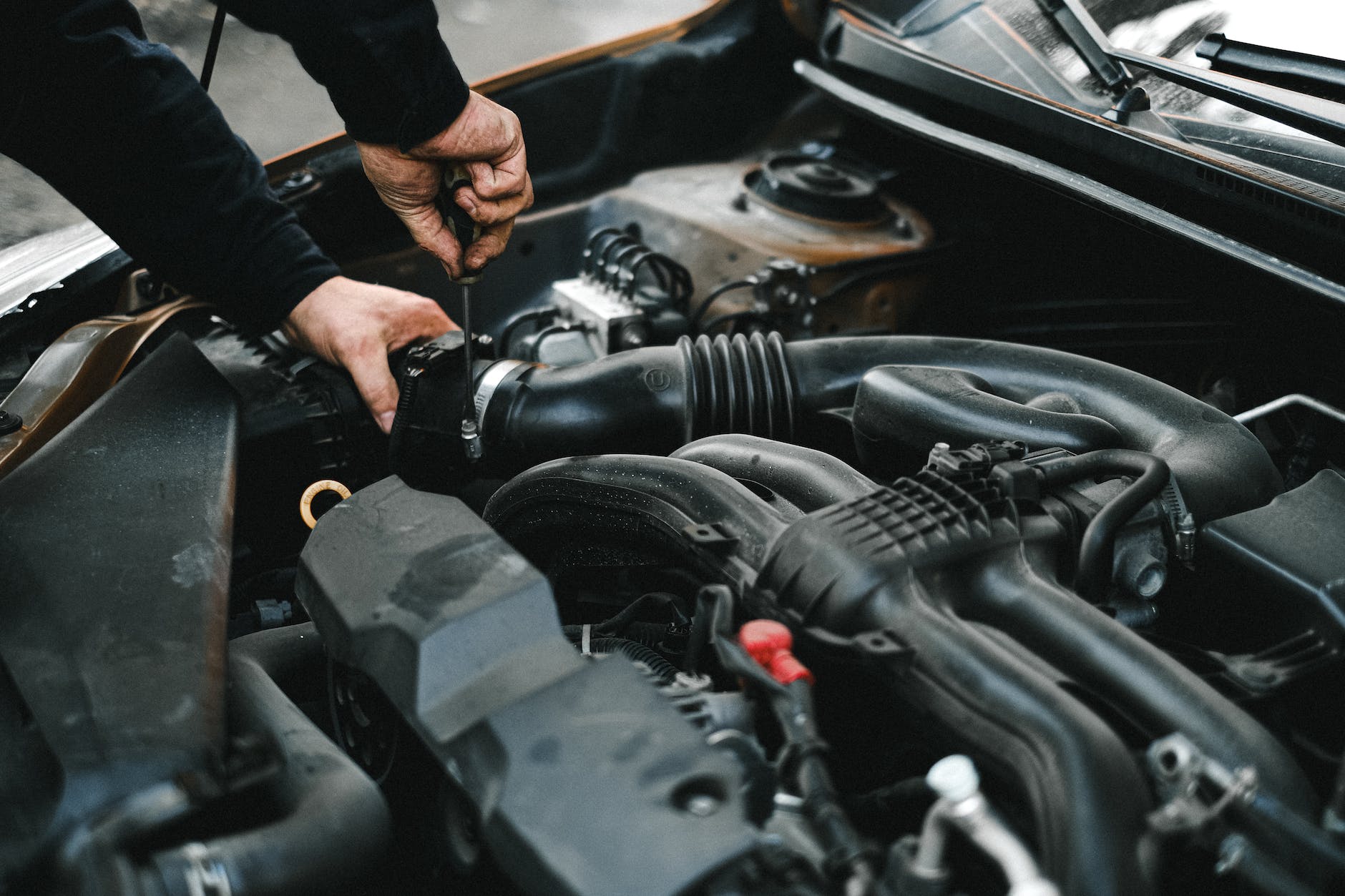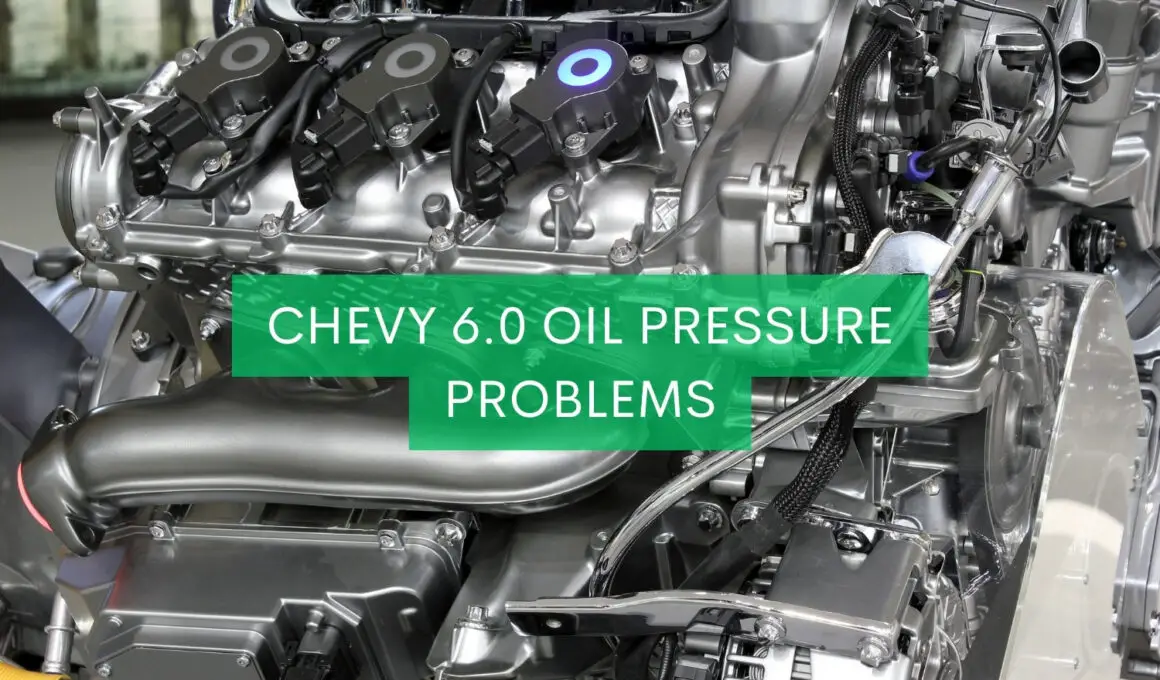In This Article Show
Over the years, I’ve encountered many engine issues, and oil pressure problems are among the most common. In fact, they can be some of the trickiest to diagnose and fix, which is why I’ve dedicated this guide to helping you understand and resolve these issues specifically for the Chevy 6.0 engine.
Oil pressure is a critical aspect of an engine’s performance and longevity. It ensures that all moving parts of the engine are adequately lubricated, reducing friction, and consequently, wear and tear.
When you encounter oil pressure problems, acting quickly to prevent further damage is crucial.
I’ve seen many instances of oil pressure problems in the Chevy 6.0. This V8 engine is robust and reliable, making it a popular choice among Chevy users. However, like any machine, it may develop issues over time. So, let’s understand how to detect and fix these issues with your Chevy 6.0.
Understanding Oil Pressure Basics
Before we get into the nitty-gritty of diagnosing and resolving oil pressure issues in the Chevy 6.0, it’s essential to understand what oil pressure is and why it plays a critical role in your engine’s health.
Simply put, oil pressure is the measure of the force that your engine’s oil is exerted under. In an ideally functioning engine, this oil travels under pressure through various passages to reach all moving components, ensuring smooth operation. It’s like the blood in our veins, reaching every corner to keep things moving seamlessly.
The normal oil pressure range for a Chevy 6.0 engine generally falls between 20 psi at idle and up to 60 psi under heavy load. This range can vary slightly depending on the engine’s age, condition, and the type of oil used. However, it’s vital to know that extreme deviations from this range may indicate an issue that needs immediate attention.
Signs of oil pressure problems can be quite apparent if you know what to look for. A tell-tale sign is the oil pressure warning light illuminating on your dashboard.
However, you might also notice other symptoms like strange noises from the engine, particularly a ticking or knocking sound, decreased engine performance, or even engine overheating.

Common Chevy 6.0 Oil Pressure Problems
Having established a fundamental understanding of oil pressure, we can now delve into the problems you might encounter with the Chevy 6.0 engine. Typically, these issues can be categorized into three main types: low oil pressure, high oil pressure, and fluctuating oil pressure.
Let’s break down each of these to understand the symptoms and causes.
1. Low Oil Pressure
Low oil pressure is a common problem that can be a symptom of several underlying issues. If your Chevy 6.0 engine’s oil pressure drops below the normal range, you’re likely to see the oil pressure warning light turn on.
Additionally, you might notice unusual engine noise, such as a ticking or knocking sound, particularly when the engine is idling. If left unaddressed, low oil pressure can lead to severe engine damage.
Several factors can cause low oil pressure. One of the most common is the use of incorrect engine oil. Not all oils are created equal, and using an oil with the wrong viscosity can lead to low oil pressure.
Other causes include a worn oil pump, clogged oil passages, or even a low oil level due to a leak or inadequate filling.
2. High Oil Pressure
While less common, high oil pressure is another issue that you might face.
High oil pressure is usually indicated by the oil pressure gauge reading consistently above the normal range. This condition can lead to excess wear and tear on your engine’s components and should be rectified promptly.
The causes of high oil pressure are typically opposite those of low oil pressure. They can include the use of incorrect oil, this time too viscous; a faulty pressure relief valve in the oil pump; or even a clogged oil filter preventing the oil from flowing freely.
3. Fluctuating Oil Pressure
Lastly, fluctuating oil pressure is a condition where the oil pressure constantly varies between high and low, failing to maintain a steady state.
This can be particularly tricky to diagnose since the symptoms can appear intermittent and may mimic both low and high oil pressure symptoms.
Fluctuating oil pressure could be due to a faulty oil pressure sensor, issues with the oil pump, varying engine RPM, or even temperature changes affecting the oil’s viscosity.
Diagnosing Oil Pressure Problems in Your Chevy 6.0
Now that we’ve understood the basics of oil pressure and identified the common problems with the Chevy 6.0 engine, we’ll focus on diagnosing these issues accurately.
Proper diagnosis is the first step towards an effective solution, and with my 15 years of experience as a mechanic, I’ve learned the significance of this step.
Importance of Accurate Diagnosis
Oil pressure issues may seem intimidating, but an accurate diagnosis can make the process of resolution significantly easier.
A correct diagnosis saves time and can prevent unnecessary expenditure on incorrect parts or services. It’s also crucial to prevent further damage to the engine, as treating the symptoms without addressing the root cause could lead to more severe problems.
Tools Needed for Diagnosing Oil Pressure Problems
To diagnose oil pressure problems accurately, you’ll need a few essential tools:
- Oil pressure gauge: This tool is vital for measuring the oil pressure in your engine accurately.
- Mechanic’s stethoscope: This can help identify unusual noises in your engine.
- Multimeter: This is useful for testing the oil pressure sensor and other electrical connections.
- Engine oil dipstick: An essential tool for checking the oil level in your engine.
- Vehicle service manual: A good reference point for troubleshooting specific issues related to your Chevy 6.0.
Step-by-Step Process of Diagnosis
- Check the oil level: Start by using the dipstick to check if there’s enough oil in the engine. A low oil level could cause low oil pressure.
- Observe the oil pressure gauge: Take note of the oil pressure reading when the engine is idle and when it’s under load. Abnormal readings can indicate oil pressure issues.
- Listen for unusual noises: A mechanic’s stethoscope can be handy here. Listen for any ticking or knocking sounds coming from the engine, as they may indicate low oil pressure.
- Inspect the oil: Look for signs of contamination or metal shavings in the oil, which can suggest severe internal engine damage.
- Test the oil pressure sensor: Use a multimeter to check if the sensor is functioning correctly. A faulty sensor can give inaccurate readings.
- Consult the service manual: If the problem persists, consult the vehicle’s service manual or seek professional help.
Remember, while these steps can help you identify the problem, the resolution may require a professional’s assistance, especially if it involves component replacement.
How to Fix Chevy 6.0 Oil Pressure Problems
Once we’ve accurately diagnosed the oil pressure issue, the next step is to fix itWhilele some of these solutions can be carried out at home, others might require professional help.
General Precautions and Safety Measures
Before you start, ensure you’re equipped with the proper tools and safety gear. This can include gloves, safety glasses, and suitable clothing. Always ensure the engine has cooled down before working on it to avoid burns.
Steps to Fix Low Oil Pressure
- Replace the engine oil and filter: Start by draining the old engine oil and replacing the oil filter. Refill with the correct type and quantity of oil as the manufacturer recommends. A simple oil change can often resolve low oil pressure issues, especially if the problem was due to incorrect oil or a clogged oil filter.
- Check for oil leaks: Inspect the engine for oil leaks. If found, the source of the leak will need to be fixed. This might involve replacing a gasket or seal.
- Inspect and replace the oil pump if necessary: If the issue persists, the oil pump might be worn or defective. In such cases, having a professional replace the pump is best.
Steps to Fix High Oil Pressure
- Change the engine oil and filter: Just like with low oil pressure, replacing the oil and filter is the first step. High oil pressure can often be resolved by simply using the correct viscosity oil.
- Inspect the pressure relief valve: The pressure relief valve in the oil pump might be stuck or malfunctioning. If this is the case, you might need a professional to replace or repair the oil pump.
Steps to Fix Fluctuating Oil Pressure
- Replace the oil pressure sensor: A common cause of fluctuating oil pressure is a faulty oil pressure sensor. If the sensor is giving incorrect readings, replacing it can resolve the issue.
- Check the oil pump: The oil pump might be faulty or worn out, causing the oil pressure to fluctuate. As with the other issues, a professional might be needed to replace the pump.
Remember, if you’re not comfortable performing these tasks yourself, it’s always a good idea to take your vehicle to a professional mechanic.
Wrapping it up
It’s vital to remember that maintaining proper oil pressure is integral to your Chevy 6.0 engine’s health and longevity. Addressing oil pressure problems promptly is key to preventing further damage and ensuring smooth operation.
With the right knowledge, tools, and sometimes professional assistance, these issues can be successfully diagnosed and resolved.
Don’t forget that preventive measures, like regular check-ups and using the correct oil, go a long way in avoiding oil pressure problems.















